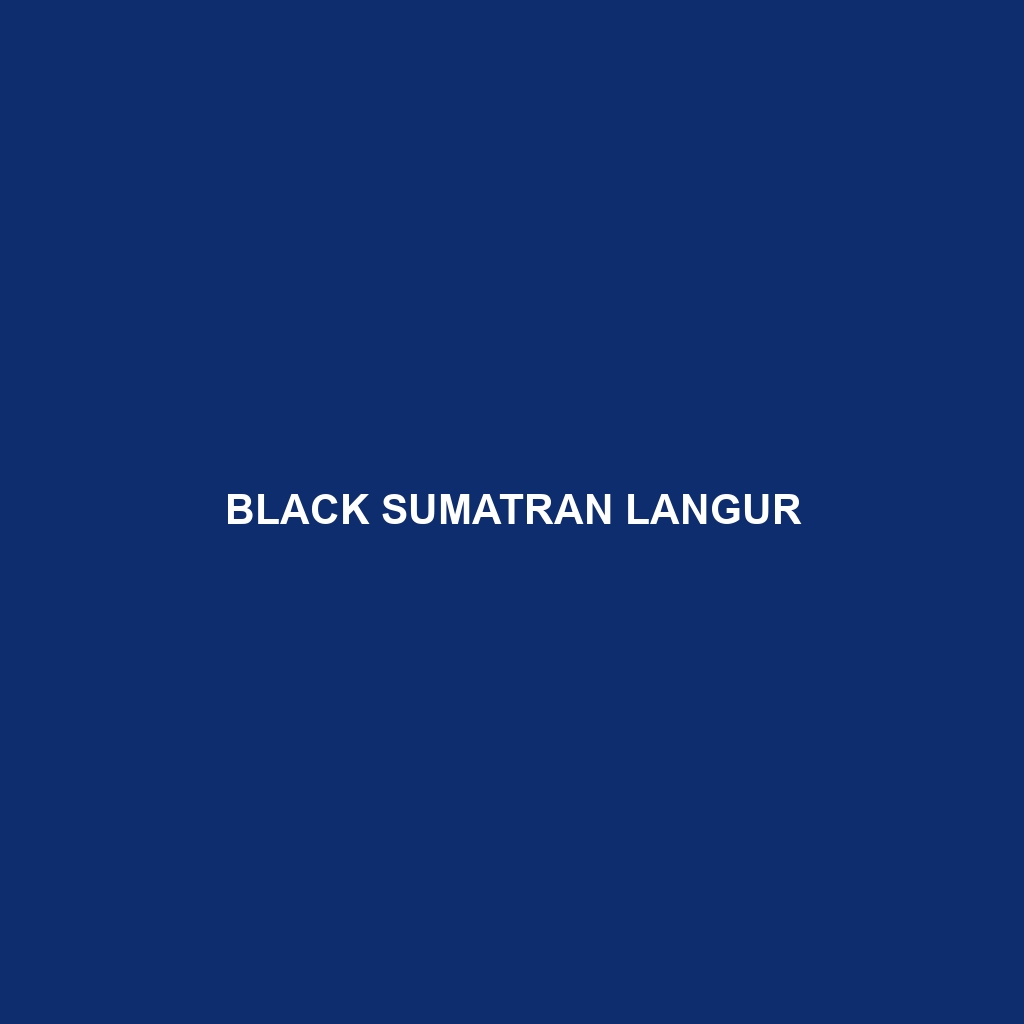Black Sumatran Langur Detailed Description
The Black Sumatran Langur (Presbytis melalophos), also known as the Sumatran Surili or Black Surili, is a fascinating and lesser-known primate species native to the Indonesian island of Sumatra. This arboreal monkey is recognized for its striking black fur and agile movements in the dense forest canopy. As an essential part of their ecosystem, Black Sumatran Langurs play a significant role in seed dispersal and maintaining the health of their forest habitats.
Physical Characteristics
Size: Black Sumatran Langurs are medium-sized primates. Adults typically measure between 45-60 cm (18-24 inches) in body length, with tails extending an additional 55-85 cm (22-34 inches). They generally weigh between 6-8 kg (13-18 lbs).
Coloration: True to their name, Black Sumatran Langurs exhibit predominantly black fur, which provides excellent camouflage in their shaded forest environments. Juveniles, however, may appear lighter, often with grayish or brownish hues that darken as they mature.
Special Features: These langurs have a distinctive head crest, formed by elongated hairs on top of their heads. Their faces are typically hairless and dark-colored, with expressive eyes that convey a range of emotions and social cues.
Behaviors
Social Interactions: Black Sumatran Langurs are highly social animals, living in groups known as troops. A typical troop consists of 5-20 individuals, led by a dominant male. Social bonds are reinforced through grooming, vocalizations, and play. These primates are known for their complex social structures and strong family ties.
Feeding Habits: As folivores, their diet primarily consists of leaves, although they also consume fruits, seeds, flowers, and occasionally insects. Their specialized, multi-chambered stomachs allow them to efficiently digest tough plant materials and extract necessary nutrients.
Ecological Roles: These langurs contribute significantly to their ecosystem by dispersing seeds through their feces, which helps in the propagation of various plant species. Their foraging activities also aid in maintaining forest diversity and structure.
Habitat and Adaptations
Habitats: Black Sumatran Langurs inhabit the tropical rainforests of Sumatra, preferring primary and secondary forests with dense canopy cover. They are most commonly found at elevations ranging from lowland regions up to 1,500 meters (4,900 feet).
Adaptations: Adapted for an arboreal lifestyle, they possess strong, agile limbs and a long tail that aids in balance as they navigate through the trees. Their keen eyesight and acute sense of hearing help them detect predators and communicate with troop members across distances.
Conservation Status
The Black Sumatran Langur is currently listed as “Endangered” on the IUCN Red List, primarily due to habitat loss from deforestation, agricultural expansion, and illegal logging. Additionally, they face threats from hunting and the illegal pet trade. Conservation efforts are crucial to ensure the survival of this species, focusing on habitat preservation, anti-poaching measures, and raising awareness about their ecological importance.
Fun Facts
Unique Communication: These langurs have a rich repertoire of vocalizations, ranging from alarm calls to various social interactions. Each call type serves a specific purpose, such as warning of predators or coordinating group movements.
Lifespan: In the wild, Black Sumatran Langurs can live up to 20 years, while those in captivity may reach even older ages due to the absence of predators and consistent access to food.
Cultural Significance: In some local cultures, Black Sumatran Langurs are considered symbols of agility and intelligence, often featured in folklore and traditional stories.
By understanding and appreciating the Black Sumatran Langur’s unique attributes, we can better support conservation efforts and ensure these remarkable primates continue to thrive in their natural habitats.
